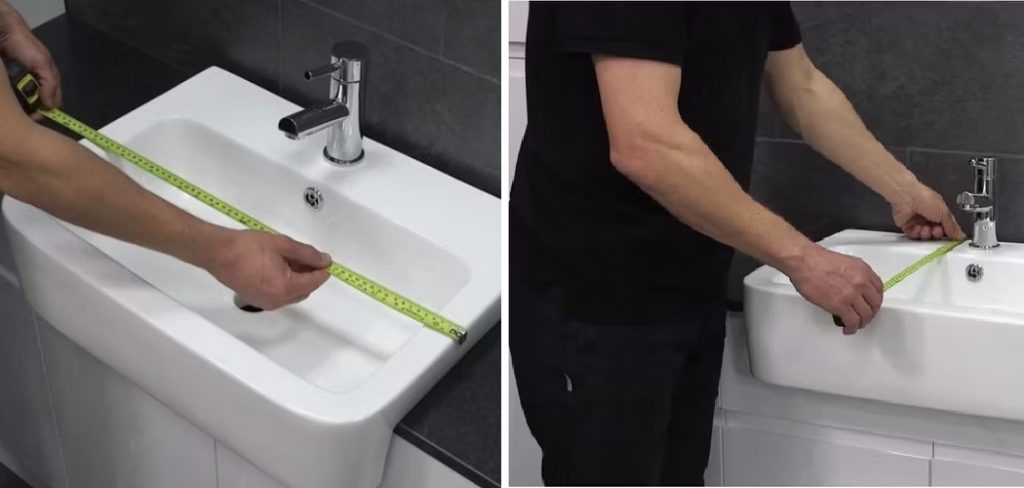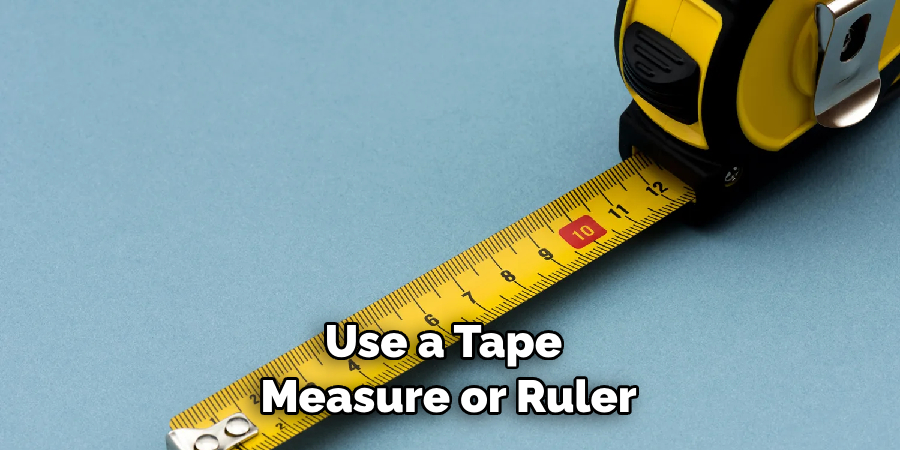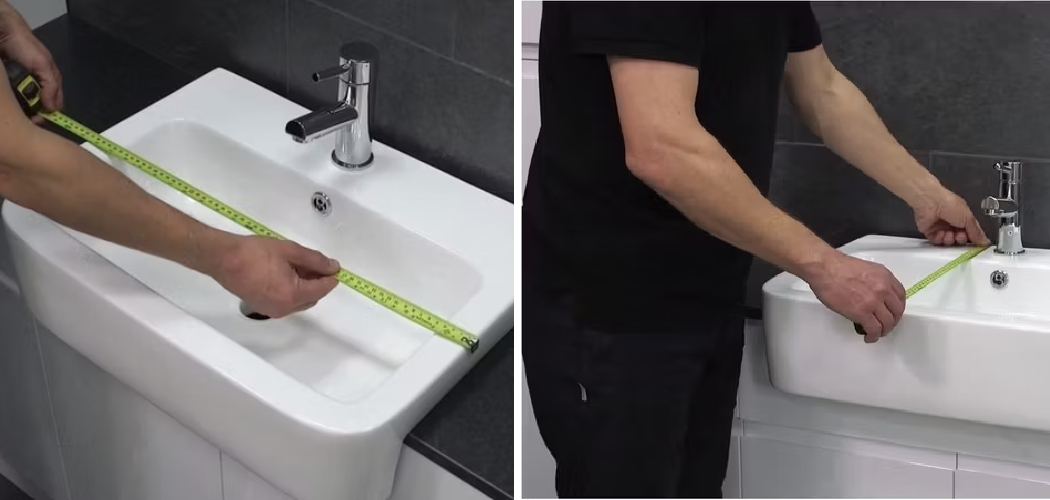Measuring a bathroom sink accurately is an essential first step in any bathroom renovation or replacement project. Whether you’re upgrading your sink for aesthetic purposes or addressing plumbing issues, knowing the correct measurements is crucial to ensure a seamless and successful installation.

In this article, we will guide you through the step-by-step process of how to measure a bathroom sink, covering the key dimensions you need to consider. From the width and depth of the sink basin to the overall length and height, understanding these measurements will help you choose the perfect sink that fits perfectly into your bathroom space.
Say goodbye to guesswork and potential installation headaches as we equip you with the knowledge to confidently measure your bathroom sink like a pro.
The Importance of Accurate Measurements for a Well-Fitted Bathroom Sink
Accurate measurements are essential when choosing and fitting a bathroom sink. Every detail should be taken into account, from the desired size of the sink to its style and shape. Measuring your existing space correctly is critical for ensuring a perfect fit with the new sink. Measurements will also help you determine how much countertop space will be available after installation.
When measuring your bathroom sink, use a tape measure or ruler instead of trying to estimate dimensions in your head. Write down each measurement so you don’t forget them later on.
Start by measuring the length and width of your existing sink cabinet, as well as the distance between center lines of any adjacent cabinets or walls. After that, look at the current plumbing connections for the sink.

Note things such as the distance from the floor, the center line of the drain, and the size of any pipes or fixtures.
You should also take into account other factors when deciding on a new bathroom sink. The material can have a big impact on its durability, so make sure to choose wisely.
Additionally, keep in mind how much countertop space you need and if it will fit alongside your existing setup. Taking accurate measurements of your current space is one of the best ways to ensure that your new bathroom sink looks great and functions correctly for years to come.
The Different Types of Bathroom Sinks Available
When it comes to selecting a bathroom sink for your home, there are many different options available. The most common type of bathroom sink is the drop-in or self-rimming model.
This type of sink is installed in an opening cut into the countertop and rests on top of it. Undermount sinks, on the other hand, are secured from beneath the countertop and sit flush with the surface.
Vessel sinks are bowl-shaped and usually made of glass or stainless steel; they rest on top of a vanity countertop and offer a more modern look than other types of sinks. Finally, wall-mounted sinks can be attached directly to a wall rather than mounted atop a vanity cabinet or countertop.

No matter which type of sink you select, it’s important to measure the space in your bathroom accurately so that you can ensure a proper fit. Taking accurate measurements will also help you determine which type and size of sink is best for your space. Be sure to measure all relevant dimensions before embarking on a bathroom remodel or purchasing any new fixtures.
10 Methods How to Measure a Bathroom Sink
1. Measure the Width of the Sink Basin
To begin measuring a bathroom sink, start with the width of the sink basin. Use a tape measure to measure the distance from one side of the sink basin to the other, ensuring you measure from the inside edges of the sink.
Record this measurement in inches or centimeters, whichever unit of measurement you prefer. The width of the sink basin is a critical dimension as it determines how much counter space the sink will occupy and how much room you have for other bathroom fixtures.
2. Measure the Depth of the Sink Basin
Next, measure the depth of the sink basin. This measurement indicates how far the sink extends from the front to the back. Use the tape measure to measure from the inside of the front edge to the inside of the back edge of the sink basin.
Make sure to measure at the deepest point of the basin. The depth of the sink basin will determine how much space you have for washing your hands or performing other tasks at the sink.

3. Measure the Overall Length of the Sink
The overall length of the sink is an important dimension to consider, especially if you have limited space in your bathroom. Measure from the outside edge of the sink on one side to the outside edge on the other side to get the total length of the sink.
This measurement includes the width of the sink basin, plus any additional space taken up by the sink’s edges or rim. Knowing the overall length is crucial for determining if the sink will fit comfortably in your bathroom vanity or countertop.
4. Measure the Overall Height of the Sink
To measure the overall height of the sink, start from the base or bottom of the sink and measure all the way up to the highest point, which may be the top edge of the sink or the faucet.
This measurement includes both the sink basin and any additional features, such as a tall faucet or backsplash. The overall height is essential for ensuring the sink will fit under any cabinets or shelves in your bathroom. Make sure to include any additional hardware or accessories in the measurement when calculating the overall height.
5. Measure the Faucet Hole Spacing
If you’re replacing an existing sink and plan to use the same faucet, measure the distance between the centers of the faucet holes. This measurement is crucial for selecting a new sink with the same faucet hole spacing to ensure a proper fit.
Common faucet hole spacing options include 4 inches, 8 inches, or a single hole for a single-handle faucet. If you plan to switch out the faucet, check the product information for the new faucet you’re planning to purchase. This will give you a good indication of the hole spacing needed for your new sink.
6. Measure the Drain Hole Size
For those replacing an old sink, it’s essential to measure the size of the drain hole. Use a tape measure to measure the diameter of the drain hole, which is the width of the hole from one edge to the other. Knowing the drain hole size is vital if you plan to install a new sink with a different drain size or if you need to purchase a new drain assembly.
7. Measure the Mounting Hole Spacing
If your sink will be mounted or installed into a vanity or countertop, measure the distance between the centers of the mounting holes. This measurement helps you determine if the sink will fit securely into your existing vanity or if you need to make any adjustments for installation.
For example, if the mounting hole spacing on the sink is 8 inches apart and your vanity has a 10-inch mounting hole spacing, you may need to make adjustments to your vanity in order for the sink to fit.
8. Measure the Clearance Space
Before choosing a sink, ensure you have enough clearance space in the bathroom to accommodate the sink and its fixtures. Measure the distance from the sink’s front edge to the nearest wall or other fixtures.
Additionally, measure the distance from the sink’s sides to any surrounding walls or cabinets. Having enough clearance space ensures comfortable use of the sink and prevents any potential obstructions.
9. Consider the Overflow
If the sink you’re considering has an overflow feature, take this into account when measuring. The overflow is a small opening near the top of the sink’s basin that prevents water from spilling over if the sink is accidentally filled too high. Ensure that there is enough space above the sink to accommodate the overflow feature and that it won’t be obstructed by any other fixtures or surfaces.

10. Double-Check Measurements and Confirm Fit
Once you’ve taken all the necessary measurements, double-check them to ensure accuracy. Compare your measurements with the manufacturer’s specifications of the sink you’re considering to confirm that it will fit properly in your bathroom space. If you’re unsure or have any doubts, consult with a professional plumber or bathroom specialist for expert advice and assistance.
Conclusion
Measuring your bathroom sink is not as daunting a task as it may seem and indeed has multiple uses. From figuring out what size of bathroom sink you will need for a new remodel, or just replacing an existing one that isn’t working correctly – having the correct measurements are critical.
To avoid mistakes and issues with your project, always consult with professionals who understand the trade-backs involved when measuring bathroom sinks correctly. Hopefully, this article gave you some helpful tips about how to measure a bathroom sink successfully, so now that you have the proper knowledge on how to get the job done, why not give it a try today?

